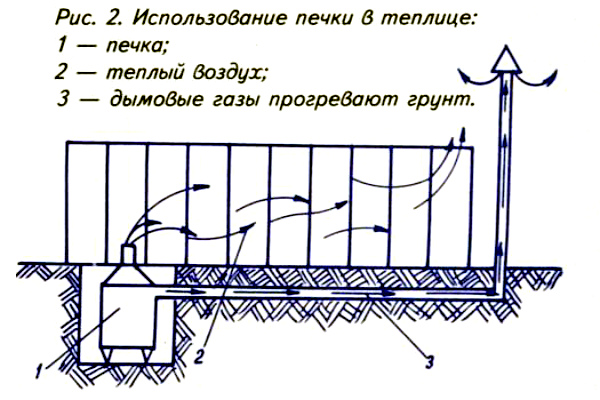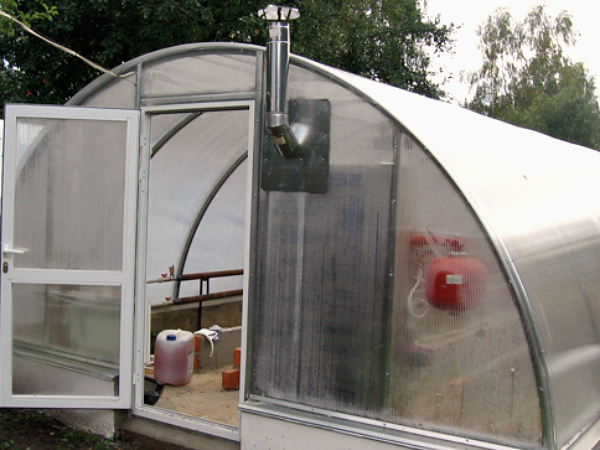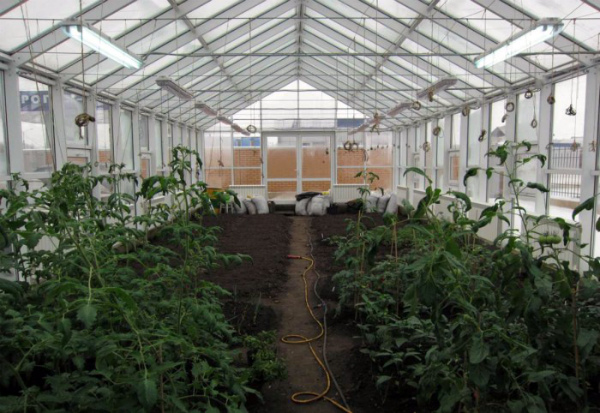How to build a greenhouse with your own hands with heating
Content
What is needed for construction
Of course, the undoubted advantage of building a winter greenhouse with heating is the fact that you can build it yourself. This will significantly save your budget and give you the opportunity to do everything exactly the way you want. Of course, in order to avoid a gross mistake, it is necessary to think over the construction plan in advance, taking into account the necessary materials and devices for lighting and heating the greenhouse.
What is needed to build a do-it-yourself winter greenhouse:
- construction plan;
- frame materials;
- material for the construction of a greenhouse;
- tool for work;
- lighting and electricity;
- heating soil, air and plants;
- irrigation system;
- ventilation, it is also a ventilation system.
The first thing to do is to draw up a construction scheme. Thanks to an accurate plan, it will be much easier and cheaper to build a greenhouse in winter, since there will be no costs for redoing this or that mistake. How much it costs to make a greenhouse in winter depends on the materials you choose for construction and on the heating system.
Also, in order to make a greenhouse of high quality and achieve good yields, it is necessary to choose the right place for building a greenhouse in winter. It is recommended to choose a flat place with good lighting, without much shade, and with good quality ground. In addition, if you plan to make a greenhouse in winter, then take care of the temperature regime in the greenhouse itself.
Video "How to build a winter greenhouse"
In this video, you will find tips from a practitioner with many years of experience in building different greenhouse options on how to build the perfect winter greenhouse.
Greenhouse construction
The construction of a greenhouse is the main task for every gardener, since if the construction is incorrect or the diagram is drawn up, serious mistakes can be made that will lead to a malfunction of the greenhouse. The first question to consider is the framework. You can build a frame made of wood and metal; in winter, you can choose both options. However, it should be noted that in time the metal frame will last longer and will be more reliable.
How much money is needed for the construction of a metal frame? Of course, more than a wooden one. And it will take more time. But still, as practice shows, most often gardeners choose metal material.
The second question that must be considered before building a greenhouse is which material is better to choose. There are several options for building a greenhouse in winter, including:
- glass;
- polyethylene;
- polycarbonate.
How much material is needed? It all depends on the size of the greenhouse.
To calculate the amount of material required to cover a winter greenhouse, it is necessary to calculate the length and width of the sides on the diagram.
As practice shows, the most optimal material for building a greenhouse in winter is polycarbonate.This is a fairly budget material, however, it is very high quality and performs well in various temperature conditions. The strength and lightness of polycarbonate have proven themselves in the building materials market. In addition, this material can easily last up to 8 years, while its quality remains unchanged. And building a polycarbonate greenhouse is much easier and takes less time than glass.
How to make heating
The heating system is the main issue in the construction of a greenhouse in winter. Many gardeners solve this issue in general very simply. They set up greenhouses close to the house or generally right next to the walls of the house, and then use the heating of the house itself. Of course, this significantly reduces the level of costs, especially at the time of construction, but, as practice shows, this is not the most practical option.
First, the steam that the greenhouse receives from the house can be unevenly distributed and rise to the upper level of the greenhouse. Secondly, if the greenhouse is rather large, then such heating may simply not be enough. In addition, if you plan to expand the size of the greenhouse in the future, it is better not to save money and install a heating device.
There are several types of heating:
- electric;
- convector;
- water;
- infrared;
- wood-burning;
- air system;
- biofuels.
All of the above options, except for biofuels, refer to the technical type of heating.
When it comes to biofuels, this is a pretty interesting way to raise soil temperatures. However, biofuel alone will not be enough to heat a greenhouse in winter. Firstly, the soil temperature rises to 17 degrees, and in winter this indicator will not be enough. Therefore, experts recommend using biofuels as an additional way to heat the soil.
The choice of the main heating system depends on how much money you plan to spend on the heating system.
The simplest and most affordable way is the air system, however, it only heats the air, not the soil. It is in this case that a combination of biofuels and air heating would be an excellent option. Practice shows that this method is quite beneficial, but not everyone will like it, as it takes time and effort.
One of the most expensive methods is infrared heating. However, it is worth it as it has a number of unique advantages. This type of heating is absolutely safe not only for plants, but also for people. In addition, infrared light heats not only the air, but also the soil and the plants themselves. Another nice bonus is the presence of a thermostat. In this case, when the required temperature is reached, the infrared lamps will turn off for a short time, and you will not need to constantly monitor the temperature and turn off the heating with your own hands.
Lighting system
It is impossible not to take into account the issue of greenhouse lighting. In winter, daylight hours are much less than in summer, but plants still need abundant light. With a lack of sunlight, there may be low yields or even poor plant growth.
If you decide to build a polycarbonate greenhouse, then it is worth considering that over time, this material begins to transmit light worse, therefore, plant lighting becomes mandatory. Also, electricity in greenhouses is needed for various devices that monitor air humidity, temperature (if these are electronic thermometers), and provide ventilation in the greenhouse.
By the way, buying a thermostat is another interesting question. This device can be made by hand. It provides ventilation of the room. Therefore, you will not need to open windows in the greenhouse every two to three hours. The thermostat will do the job for you.
Irrigation system
Perhaps the last thing worth looking at is the irrigation system. Do not forget that in winter the temperature in the greenhouse should be the same as in summer.The outside air temperature does not in any way apply to the plants in the greenhouse. Therefore, it is necessary to think over and lay the irrigation system in advance. The most optimal options would be a drip irrigation system or an irrigation system.
Of course, the indisputable advantage of the drip irrigation system is the fact that it can be easily done by hand. This is a very practical, simple and budget-friendly option that will work great for a variety of plants. The irrigation system is a more modern way of watering. Irrigation nozzles are attached to the greenhouse ceiling and water the plants at a specific frequency. Many gardeners and gardeners have already been convinced in practice of the convenience of this system, but they still prefer to combine these two options. This is due to the fact that when watering plants using an irrigation system, water in a lower concentration enters the soil and roots. Therefore, drip irrigation will perfectly moisturize the plants from below, and the irrigation system - from above.
Do not forget that the irrigation system requires not only water, but also electricity. In addition, the purchase will also cost a pretty tidy sum, and making such a system with your own hands is not so easy. Drip irrigation can be done independently, it requires less costs when creating and during direct use.
Which option to choose, again, depends on how much money you plan to spend to build a winter greenhouse with your own hands. Of course, at first you can do without an irrigation system altogether. However, then it will be more difficult to lay it, and at first the plants may not take root well or give low yields due to lack of moisture.
Video "Heated the ground in a greenhouse with air"
This video will be interesting to watch for those who plan to make heating of the greenhouse with their own hands. You will get acquainted with the technology in which pipes with air are used as thermal insulation.







